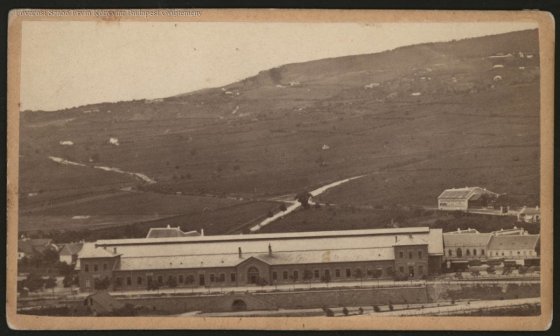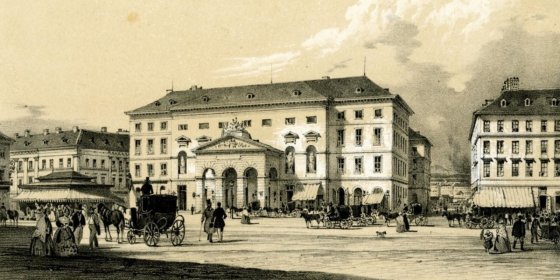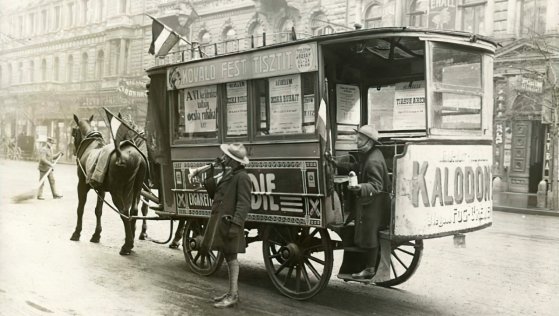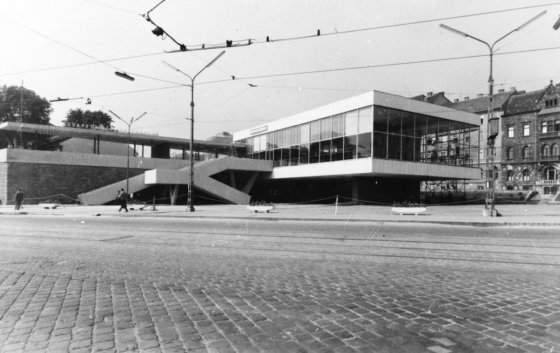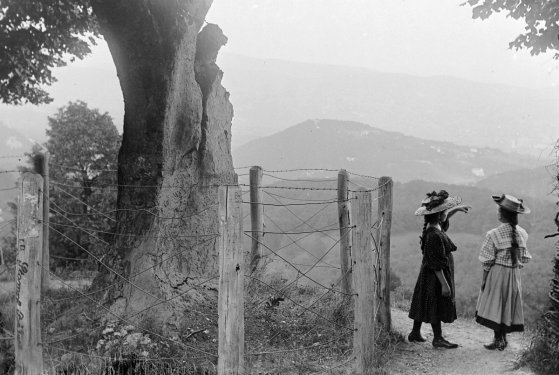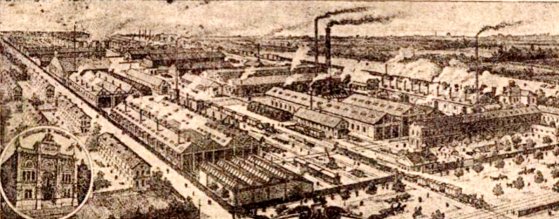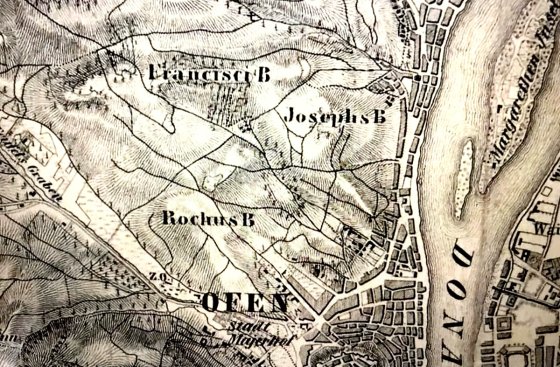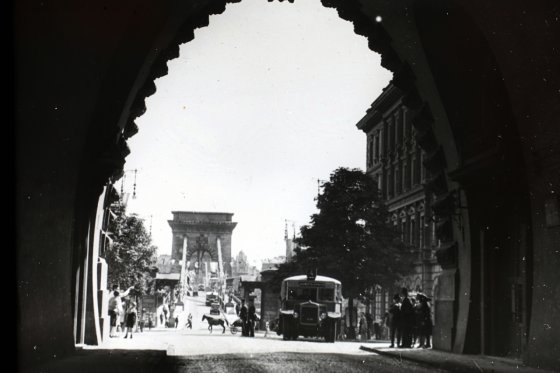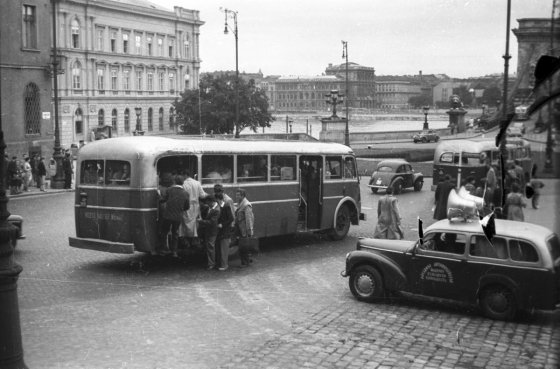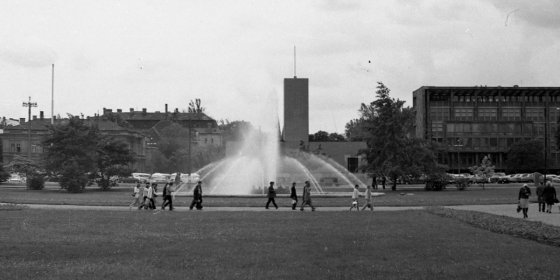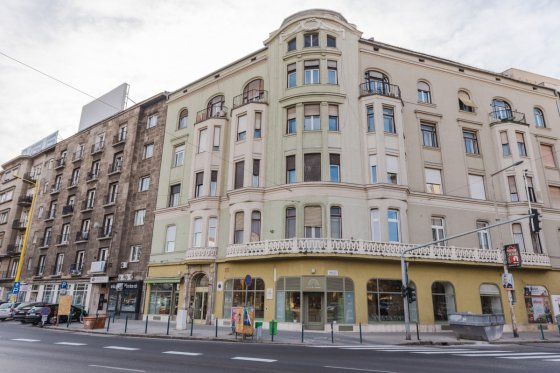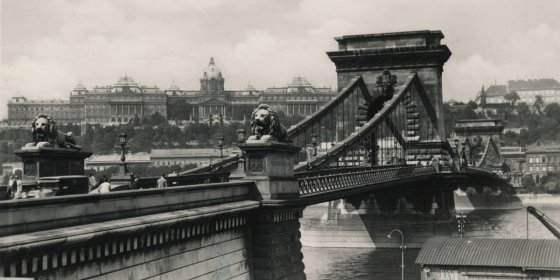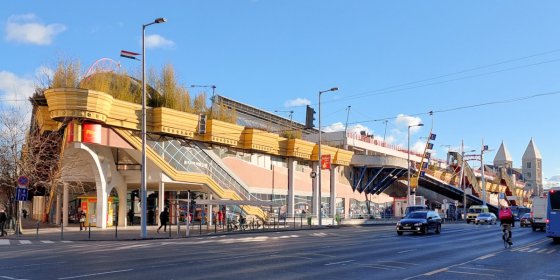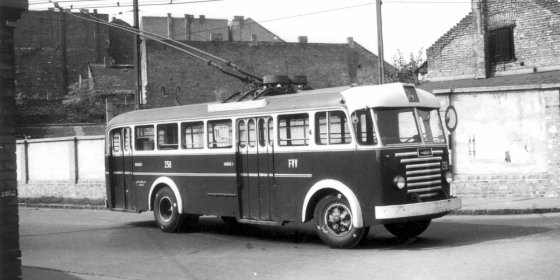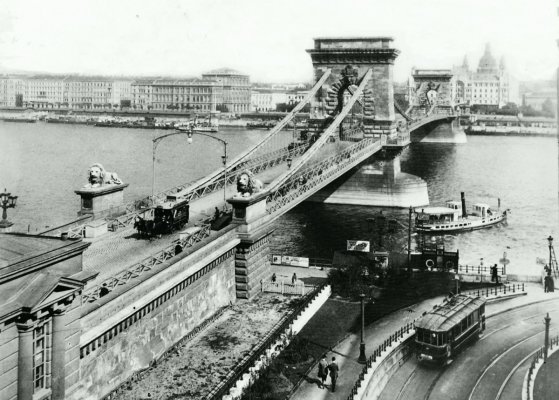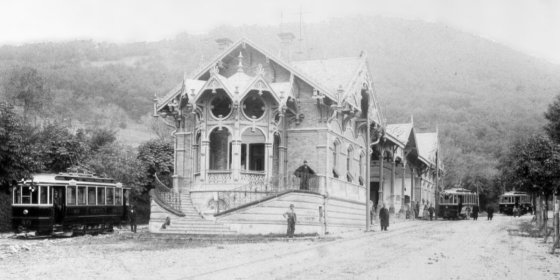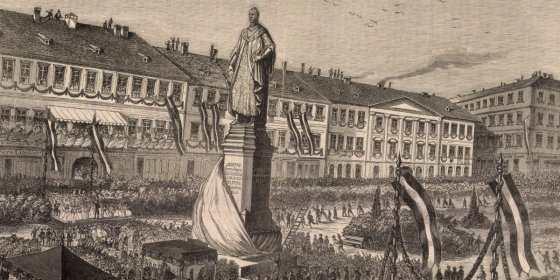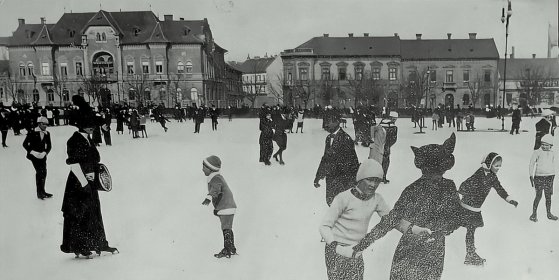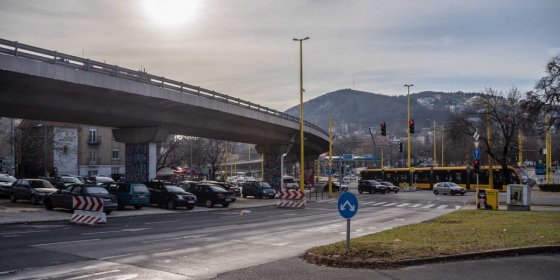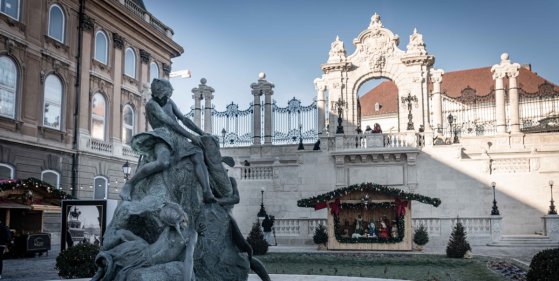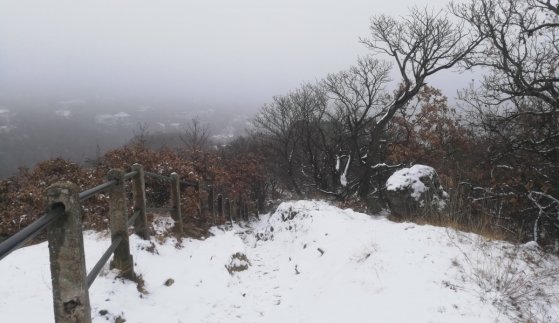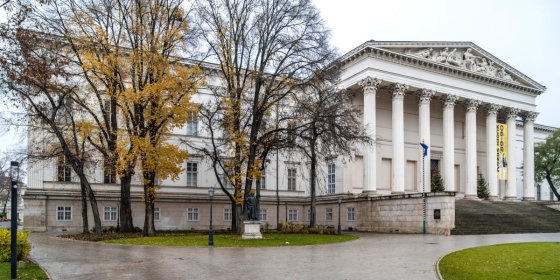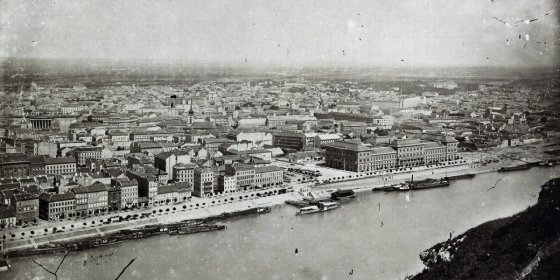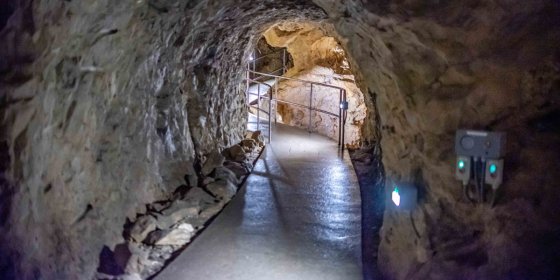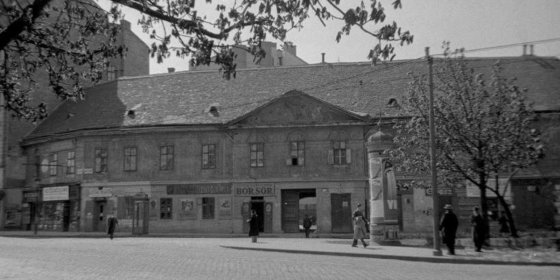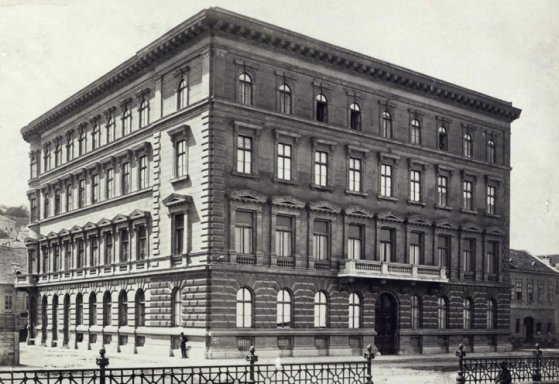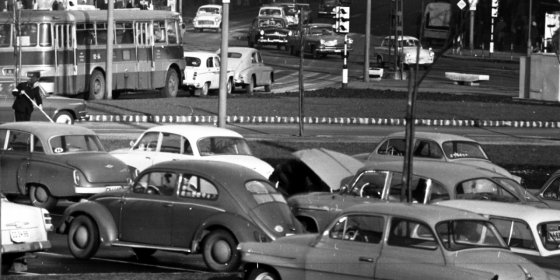 The „intertwined history” of the bridges and the city of Budapest
Which ideas and events have shaped the fate of bridges of Budapest and the cityscape? Alongside many other interesting facts, this question is also answered this newly published book by the Budapest City Archives, which introduces the history of bridges in Budapest.
The „intertwined history” of the bridges and the city of Budapest
Which ideas and events have shaped the fate of bridges of Budapest and the cityscape? Alongside many other interesting facts, this question is also answered this newly published book by the Budapest City Archives, which introduces the history of bridges in Budapest.
Buda
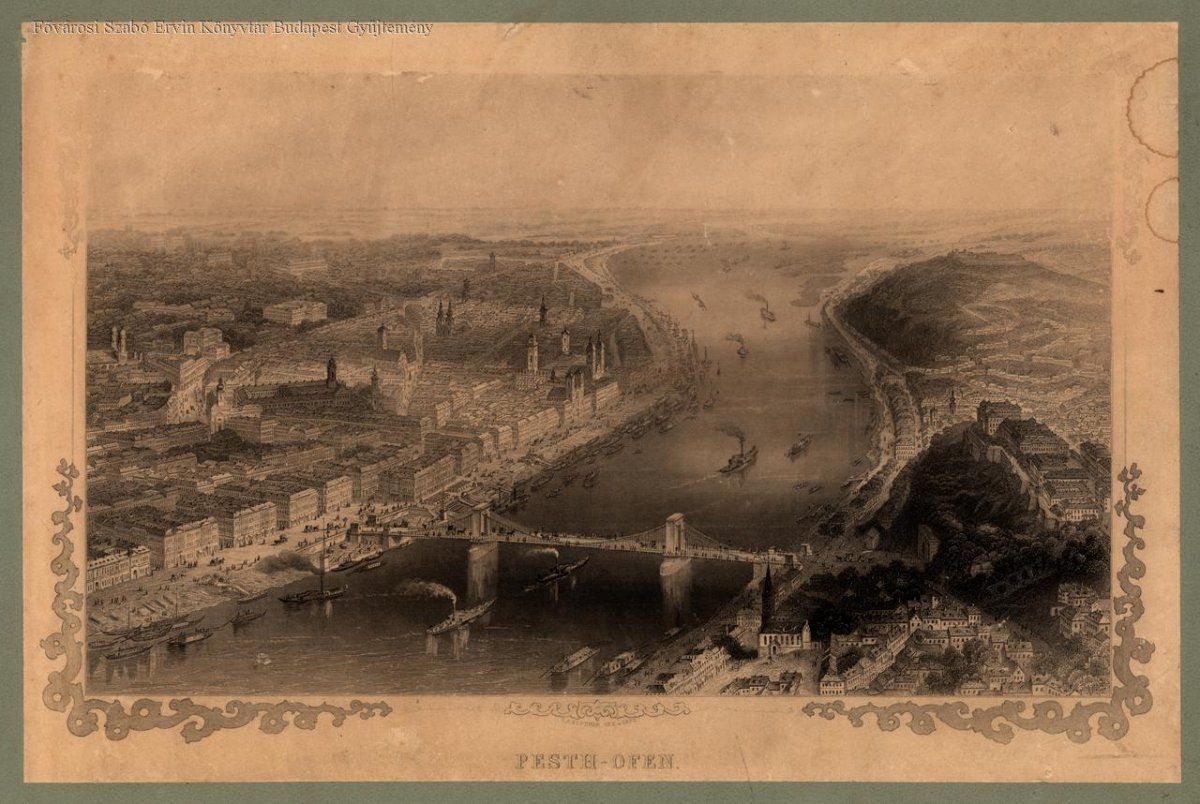 When the Turkish Sultan visited Pest and Buda
When the Turkish Sultan visited Pest and Buda
July 31, 2022 at 10:30 AM
The Turkish Sultan arrived in Pest-Buda in the summer of 1867. On the occasion of the one-day visit, the people of Pest organised a folk ceremony, welcoming the guest with 72 cannon shots. Pasha Abdul-Aziz stayed here for only a few hours, visited the the royal palace in the Castle, and his program even included a carriage ride in Pest, and then left in the same way as he arrived, by boat.
By train to Pest and Buda - Until the Compromise, only private railways operated in the country
July 28, 2022 at 9:00 AM
Today, it is natural to get on the train or plane and get anywhere in the world from Budapest. However, it was quite different a century and a half ago. Let's see where someone could travel from Pest or Buda by train 155 years ago, in the year of the Compromise!
Hebe's Kiosk: the first outdoor ice cream parlour in Pest
July 7, 2022 at 1:00 PM
Budapest has a long tradition of making ice cream. Already during the Turkish rule, eastern vendors made iced drinks from fruit juices, and then northern Italian immigrants started making ice cream-like sweets in Buda and Pest in the 18th century. However, the real triumph of today's ice cream can be linked to the name of confectioner Péter Fischer in Budapest, who opened his famous kiosk on today's Vörösmarty Square 180 years ago.
The first horse-drawn omnibus started in Pest 190 years ago - These carriages travelled the streets of the capital for nearly a hundred years
July 1, 2022 at 9:00 AM
The first omnibus, i.e., horsebus, started in Pest on 1 July 1832. It connected two coffee houses, one was in the City Park, the other in the City Centre, the main goal of the business was to increase the turnover of the City Park coffee house. Omnibuses were part of the Budapest street scene for nearly a hundred years.
The first “modern Déli” was built 60 years ago, but we can no longer see it today
June 22, 2022 at 9:00 AM
The Déli Pályaudvar [Southern Railway Station] has been serving rail traffic since 1861. The current one is its third station building since its opening. The most interesting was probably the second building, which was handed over 60 years ago, in 1962, and which stood in its original form for barely 13 years. We remember this first “modern Déli”.
Ninety-five years ago, Normafa fell down - they tried to save it for decades
June 19, 2022 at 1:00 PM
95 years ago, hikers in Buda surprisedly found on Svábhegy that their favourite, century-old tree had disappeared overnight. The excursion place without the beech tree called Normafa from 19 June 1927 was no longer the same as before.
András Mechwart, who made the Ganz Factory great, passed away 115 years ago
June 17, 2022 at 11:30 AM
András Mechwart died 115 years ago, and he created the Ganz Factory, a company that has defined Hungarian industry for decades, from a company of a few hundred people. Originally, the main factory was located in Buda, in the area between today's Bem József Street and Ganz Street, from where it expanded to Kacsa Street, Fény Street, and then to its Pest sites. The memory of the factory is preserved today by the Ábrahám Ganz Foundry Collection at 20 Bem József Street, and posterity pays tribute to András Mechwart with the 2nd District square named after him and the bust shown here.
When the hills of Buda were given Hungarian names - the dűlőkeresztelő [ridge baptism] was 175 years ago
June 11, 2022 at 10:00 AM
Do you know where the Burgerberg or the Feldhut or the Reiche Reid are in Buda? In fact, when they say they have to travel to Dreihotter, no one thinks of getting on bus 21. Today, the districts of Buda bear beautiful, sonorous and sometimes ancient sounding Hungarian names, but this has only been the case since 1847, when almost every area of Buda was renamed in one fell swoop. It was the famous dűlőkeresztelő [ridge baptism].
The first Zero Kilometre Stone was placed in Clark Ádám Square 90 years ago
May 7, 2022 at 10:00 AM
All roads lead to the Chain Bridge. This saying is true in that the length of the main roads starting from Budapest is calculated in kilometres from here, the Chain Bridge, more precisely from Clark Ádám Square on the Buda side. To mark this, the first 0-kilometre stone was inaugurated here on 7 May 1932, 90 years ago.
Sixty years ago, Budapest was at a crossroads - the transport of the capital in the 1960s
April 23, 2022 at 2:00 PM
Budapest's traffic was at a crossroads 60 years ago as well as now. Experts sought answers to questions about how much the then outdated public transport network needs to be developed and how to prepare the city for the expected car traffic. Studies have also helped to make these decisions. Based on a work published 60 years ago, we present the transport dilemmas of Budapest at that time.
Fifty years ago: severe water shortages in Budapest
March 30, 2022 at 9:00 AM
As in the current drought, Hungary and Budapest was hit by a significant water shortage fifty years ago, exacerbated by an outdated water supply network and regular pipe ruptures. The situation was so critical in 1971–1972 that the water consumption of industrial plants was restricted and the population felt water shortages, as in many places there was no water flowing from the taps, so for a while the water supply had to be secured by water carts.
The Single Parent Center opened in an Art Nouveau house in Buda
March 23, 2022 at 6:00 PM
The new Single Parent Center in Buda was set up in a beautiful Art Nouveau house on the ground floor of a former bank branch. The institution helping families opened its doors on Monday in the 12th district in the field of Hungarian Jacobins.
It was decided 245 years ago that the oldest university in Hungary was moving to Buda
March 16, 2022 at 9:00 AM
The oldest, still operating university in Hungary, the legal predecessor of today's Eötvös Loránd University, Semmelweis University and Pázmány Péter Catholic University, began operating in Nagyszombat [today Trnava] in 1635. Maria Theresa decided to move it, and although it was suggested that it should be placed in the Invalidus Palace in Pest, in the building of today's Central Town Hall, it was finally moved to Buda, into the Castle, in 1777.
After the war, the coat of arms of the nobility only remained on the Buda side of the Chain Bridge
March 11, 2022 at 11:00 AM
Two coats of arms were placed on the Chain Bridge 170 years ago, three years after it opened. Family, noble symbols that referred to the two people without whom the first permanent Danube bridge connecting Pest and Buda would not have been built. They were the greatest Hungarian and a wealthy banker, István Széchenyi and György Sina, to whom the general meeting of the Chain Bridge Company wanted to give gratitude this way.
The Lehel Market Hall building was handed over 20 years ago
February 8, 2022 at 9:30 AM
The Lehel Market Hall building was handed over twenty years ago on the site of the more than 100-year-old Lehel Square Market. The view of the huge five-story hall, which includes more than three hundred business premises, is still very divisive. Thousands of people shop every day in the hall built in the postmodern style. How could it be that even though they wanted to design a hall here as early as the 1900s, they had to wait until the 2000s? That is what PestBuda investigated.
The Ikarus 60 trolleybus was introduced seventy years ago
February 7, 2022 at 11:00 AM
In the 1950s, the Hungarian-made solo, ie non-articulated, trolleybuses, which ran until the mid-1970s, began to be produced out of need. Although Soviet technology was used, the body was the same as the Ikarus 60 bus that appeared at the time. The first Ikarus 60T, ie the trolleybus, was introduced to the general public in Budapest 70 years ago.
The tram started on the Várkert Embankment 115 years ago
February 1, 2022 at 9:00 AM
The tramway at the Chain Bridge bypasses the Buda end of the bridge in a tunnel, under the ground. However, when it was built, the tramway was debated for 9 years by the Budapest City Council and the Budapest Public Works Council, it was difficult for them to decide whether to run the tram on the upper or lower embankment. In the end, the dispute was concluded, so 115 years ago, in 1907, trams could start south of the Chain Bridge.
The legendary Zugliget tram line was shut down 45 years ago
January 17, 2022 at 2:00 PM
One of the most popular tram lines, the last of which was the iconic tram 58, was discontinued 45 years ago, on 17 January 1977. One of the first tram lines on the Buda side was the one in Zugliget, which started in 1896, the year of the millennium, and although it was replaced by the 58V replacement bus after the 1977 shutdown, then the 158 bus, and today the 291 bus, to this day, many are waiting for the revival of the tram line in the capital.
Palatine Joseph, who died 175 years ago, had been systematically developing Budapest for decades before the Public Works Council
January 15, 2022 at 3:30 PM
Palatine Joseph [József nádor in Hungarian] died 175 years ago in Buda. Although the archduke born in Florence was destined for a different career, he did much for Hungary, Pest and Buda from 1795 as a governor, then from 1796 as Palatine until his death in 1847. On the anniversary of his death, we put together a bouquet of what Budapest owes to him.
It was once a famous ice rink in Buda, today it is one of the busiest junctions in the country
December 29, 2021 at 11:00 AM
Ice skating is one of the most popular winter sports done by many in Budapest. Few people know, but one of the busiest junctions in the country, Széll Kálmán Square, was once home to a famous and very popular ice rink in Buda with a huge, richly decorated skating hall. By the end of the 1930s, the square had been completely transformed and today we only have pictures and stories of the former famous skating rink and sports fields in Buda.
Residential buildings were also demolished due to the construction of the 45-year-old BAH junction overpass
December 20, 2021 at 9:00 AM
The 660-meter overpass above the BAH junction plays an indispensable role in the traffic of Budapest, as it is actually the gateway to Lake Balaton. The huge bridge was built 45 years ago, and since then tens of millions of people have crossed it to reach Lake Balaton or the Adriatic. However, the construction also came at a price: a total of 73 flats disappeared due to it, and the old customs house was also demolished.
New monumental restorations in the Buda Castle - The Habsburg Gate, the Fountain of the Fishing Children and their surroundings have been beautified
December 15, 2021 at 9:00 AM
We can see another part of the surroundings of the Budavár Palace in the same form as it was once created by the great masters of the turn of the century, the architect Alajos Hauszmann, the sculptor Gyula Jungfer, the sculptors Károly Senyei and Gyula Donáth. Yesterday, the Habsburg Gate, its staircase, and the Fountain of the Fishing Children were handed over, after being renovated together with their surroundings. We visited the site, where we could not only see the demanding restoration of these artistic works, but also see a special festive exhibition as well as an intimate Advent fair.
The Ördög-orom and its surroundings: one of the hidden treasures of Buda
December 12, 2021 at 4:30 PM
We headed to one of the most easily accessible heights in Buda: despite its name, Ördög-orom [Devil's Peak] is a nice, excellent excursion place for people used to the city, we don't even have to wear boots. There are plenty of sights and attractions in the area, now we present a small slice of it as a short tour.
The interiors of the Hungarian National Museum are being renovated
November 14, 2021 at 4:00 PM
Internal renovation work has begun at the Hungarian National Museum, during which the reception areas and the museum shop, as well as a café, will be renovated.
"Budapest should be made a metropolis" - 150 years ago, the large-scale constructions in the capital were announced
November 4, 2021 at 10:30 AM
The transformation of the Hungarian capital into a metropolis was formulated before the unification of Pest and Buda, when in 1871 a tender was issued for the preparation of a regulatory plan that would provide a framework for the planned large-scale constructions. The tender, which closed 150 years ago, received a number of proposals that contributed to the development of the currently known structure and cityscape of the capital.
Miracle under Buda - The Szemlő-hegyi Cave can be visited for 35 years
November 1, 2021 at 2:00 PM
Although the Szemlő-hegyi Cave has been discovered for more than 90 years, it has only been open to the public for 35 years. This is one of the most beautiful and interesting underground attractions in the capital, which is a great recognition, as there are several cave specialities below Budapest.
The House of Creation was demolished 85 years ago
October 3, 2021 at 10:00 AM
One of the famous buildings in Buda was the House of Creation (Teremtés-ház), which later, as House of Formation (Alkotás-ház), gave the name of the street. On the facade of the house was a relief called Creation, which was considered one of the most beautiful works in all of Buda. The work probably owes its existence to Haydn's oratorio, The Creation, presented in 1800 at the Buda Castle. The building was demolished 85 years ago and replaced by a six-story house. On the occasion of the anniversary, Pestubda presents the history of the former famous building.
The other Andrássy Palace - After the war, the Bem quay building was demolished
September 17, 2021 at 11:00 AM
The son of Prime Minister Gyula Andrássy once lived with his family in the three-storey palace on the banks of the Danube. in which we can see today the modern building of the French Institute. The elegant Neo-Renaissance building on the Bem Quay was demolished after World War II and was replaced by an empty plot for decades.
Smoggy roads, blackening house walls - decreasing air pollution in Budapest was decided 45 years ago
September 15, 2021 at 3:00 PM
The air in Budapest was already so bad in the mid-1970s that the problem forced the authorities to take action. The Budapest Socialist Council therefore designated nine areas in the autumn of 1976 where improving air quality was a priority.
The Buda Castle under constructionwas also visited by Maria Theresa, who visited the capital in 1751
August 4, 2021 at 3:00 PM
Although she gave permission to expand the Buda Castle, Maria Theresa visited Pest and Buda only twice. Her first visit took place in August of 1751, the 11th year of his reign, 270 years ago. This was when the diet was held in Bratislava and during that time the royal court spent a few days in Pest and Buda.
More articles
 The „intertwined history” of the bridges and the city of Budapest
Which ideas and events have shaped the fate of bridges of Budapest and the cityscape? Alongside many other interesting facts, this question is also answered this newly published book by the Budapest City Archives, which introduces the history of bridges in Budapest.
The „intertwined history” of the bridges and the city of Budapest
Which ideas and events have shaped the fate of bridges of Budapest and the cityscape? Alongside many other interesting facts, this question is also answered this newly published book by the Budapest City Archives, which introduces the history of bridges in Budapest.
 The Bridge Report, which brought a turning point in the history of Budapest
A travel report that changed the history of Pest and Buda, as well as Hungary. The little book contributed to the change of half a thousand years of legal customs and the implementation of an investment of unprecedented size and technical quality. This book was The Bridge Report [Hídjelentés in Hungarian].
The Bridge Report, which brought a turning point in the history of Budapest
A travel report that changed the history of Pest and Buda, as well as Hungary. The little book contributed to the change of half a thousand years of legal customs and the implementation of an investment of unprecedented size and technical quality. This book was The Bridge Report [Hídjelentés in Hungarian].
 Drama on the university wall - The heroic monument was planned 95 years ago
In the constant hustle and bustle of the Egyetem Square in Pest, the students may not even notice the monument that decorates the short section of wall between the church and the central building of ELTE. However, it commemorates their predecessors, the heroes who fought for their country in World War I, and those who heroically helped them. The first design of the dramatically collapsing soldier was born in 1928, ninety-five years ago.
Drama on the university wall - The heroic monument was planned 95 years ago
In the constant hustle and bustle of the Egyetem Square in Pest, the students may not even notice the monument that decorates the short section of wall between the church and the central building of ELTE. However, it commemorates their predecessors, the heroes who fought for their country in World War I, and those who heroically helped them. The first design of the dramatically collapsing soldier was born in 1928, ninety-five years ago.

